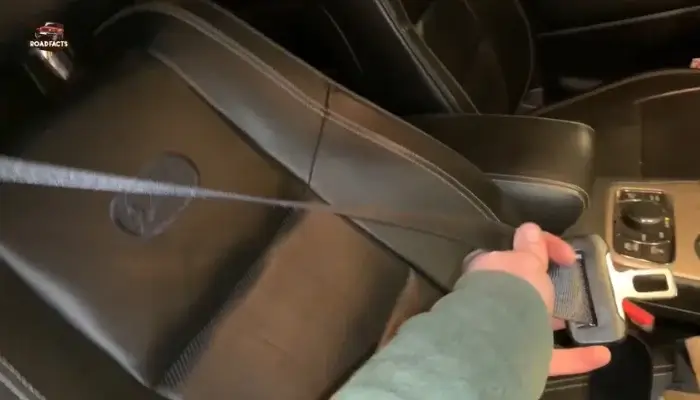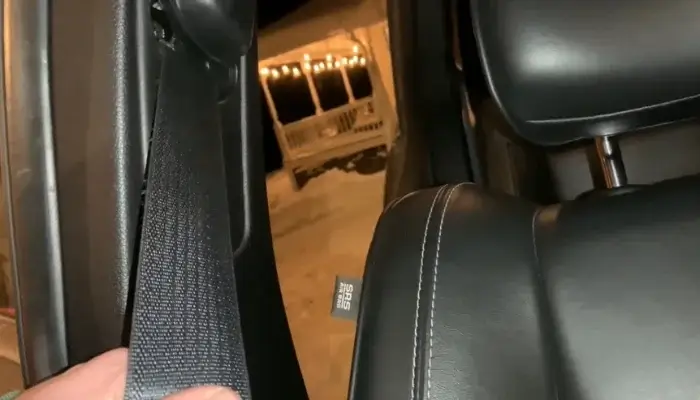Are you experiencing an issue with your Jeep Grand Cherokee’s seat belt not retracting properly? This can be a frustrating and potentially unsafe problem to encounter. This article will explore the common reasons behind this issue and provide solutions to ensure your safety on the road.
Understanding the Seat Belt Mechanism

Before delving into the reasons for a malfunctioning seat belt, let’s take a moment to understand how the seat belt mechanism works.
Why My Jeep Grand Cherokee Seat Belt is Not Retracting
Is your Jeep Grand Cherokee’s seat belt refusing to retract? Let’s explore the possible causes and solutions to this common problem.
1. Lack of Lubrication
The first potential culprit behind a non-retracting seat belt is the lack of proper lubrication within the retractor mechanism. Over time, dust, grime, and general wear and tear can cause the mechanism to become sluggish, impeding the smooth retraction of the seat belt. This issue can manifest as slow or non-retracting seat belts, which can be frustrating and unsafe.
Solution: To resolve this problem, it’s essential to perform regular maintenance by cleaning and lubricating the seat belt retractor. Using a silicone-based spray can help ensure the mechanism’s continued smooth operation. Addressing this simple yet crucial aspect of seat belt care can enhance your overall safety while driving your Jeep Grand Cherokee.
2. Twisted or Damaged Belt
A twisted or damaged seat belt can significantly hinder proper retraction. When the seat belt is twisted or has visible damage such as frays or tears, it can prevent it from rolling back smoothly, leading to entanglement and discomfort.
Solution: To address this issue, inspect your seat belt for signs of twisting, knots, or visible damage. If any such issues are detected, replacing the seat belt with a new, undamaged one is highly recommended. This simple step ensures that your seat belt functions as intended, providing you with the safety you deserve while driving your Jeep Grand Cherokee.
3. Faulty Retractor Spring
The retractor spring plays a vital role in the seat belt system by pulling the belt back into place after use. If this spring becomes damaged or worn out, it can result in the seat belt not retracting as it should.
Solution: To address this issue, it is advisable to consult a professional mechanic who can assess the condition of the retractor spring and, if necessary, replace it with a new one. Proper functioning of the retractor spring is essential for the overall safety of your vehicle, making this a crucial aspect to address when dealing with non-retracting seat belts.
4. Seat Belt Height Adjuster

Sometimes, the seat belt height adjuster can inadvertently cause retraction issues if it is incorrectly positioned. When the height adjuster is too high, it may obstruct the smooth retraction of the seat belt, leading to difficulties.
Solution: To resolve this problem, adjusting the seat belt height to the appropriate position is essential. Ensuring that the height adjuster does not hinder the seat belt’s ability to retract smoothly is a simple yet effective way to improve your driving comfort and safety in your Jeep Grand Cherokee.
Must Read: How to Unlock a Seat Belt Retractor on a Jeep
5. Debris and Obstructions
Debris and foreign objects caught within the seat belt mechanism can significantly impede retraction. These obstructions can prevent the seat belt from rolling back correctly, leading to issues with entanglement and non-retraction.
Solution: To address this concern, it’s crucial to regularly inspect your seat belt mechanism and remove any debris or foreign objects that may have become lodged inside. Keeping the area around the seat belt clean is a proactive measure that helps maintain the functionality and safety of your Jeep Grand Cherokee’s seat belts.
6. Tension Caused by an Accident
In the aftermath of an accident, the seat belt tensioners may activate, causing the seat belt to become locked and non-retractable. This is a safety feature designed to secure occupants during a collision.
Solution: To resolve this issue, it’s essential to have a professional mechanic inspect and reset the seat belt tensioners. This step ensures that the seat belt is ready for future use and provides the necessary protection in case of another accident. Proper post-accident assessment and maintenance are critical for your safety.
7. Aging Seat Belt
As seat belts age, they may lose elasticity and become less effective at retracting. This is particularly common in older vehicles where the seat belts have endured years of use.
Solution: In severe wear and tear cases, it’s advisable to consider replacing the seat belts entirely. This proactive approach ensures that your Jeep Grand Cherokee’s safety features remain optimal, providing you with the protection you need while driving.
8. Improper Installation

Improper installation of seat belts can lead to retraction issues. When the retractor is not aligned correctly, it can cause tension, making it difficult for the seat belt to retract smoothly.
Solution: To address this problem, it’s essential to consult a professional mechanic to ensure that the seat belt is correctly installed and aligned. Proper installation is crucial for the safety of both the driver and passengers, and addressing any installation errors promptly is a responsible course of action.
Final Notes
Knowing how to unlock a seat belt retractor on your Jeep Grand Cherokee is essential for your safety and peace of mind. Following the steps outlined in this guide, you can ensure that your seat belt functions correctly and provides the protection you need while on the road.
Remember that your safety on the road should always be a top priority. If you encounter persistent seat belt retraction issues despite troubleshooting, seek professional assistance to ensure your vehicle’s safety systems are functioning correctly.
FAQs
Why is my seat belt not retracting at all?
Seat belts may not retract due to foreign objects, damage, or a twisted belt. Refer to the troubleshooting steps in the article to resolve the issue.
Can I clean the seat belt myself?
You can clean the seat belt yourself using a mild detergent and a soft cloth. Remember to lubricate the retractor with a silicone-based lubricant.
Is it safe to drive with a non-retracting seat belt?
Driving with a malfunctioning seat belt is not safe. It’s crucial to address the issue promptly to ensure your safety.
How often should I replace my seat belt?
Seat belts should be replaced if they are worn out, damaged, or no longer retract properly. Regular inspections are recommended.
How do I know if my seat belt retractor is locked?
You can tell if your seat belt retractor is locked when the belt cannot be pulled out further, and it holds firmly in place.
Are there any safety risks associated with unlocking the seat belt retractor?
Unlocking the seat belt retractor, when done correctly, should not pose any safety risks. However, always ensure the seat belt functions correctly afterward to guarantee your safety.
Can I use any lubricant to help with a stubborn seat belt retractor?
It’s not recommended to use any lubricant on the seat belt retractor. If you’re experiencing issues, consult a professional mechanic for a safe solution.

